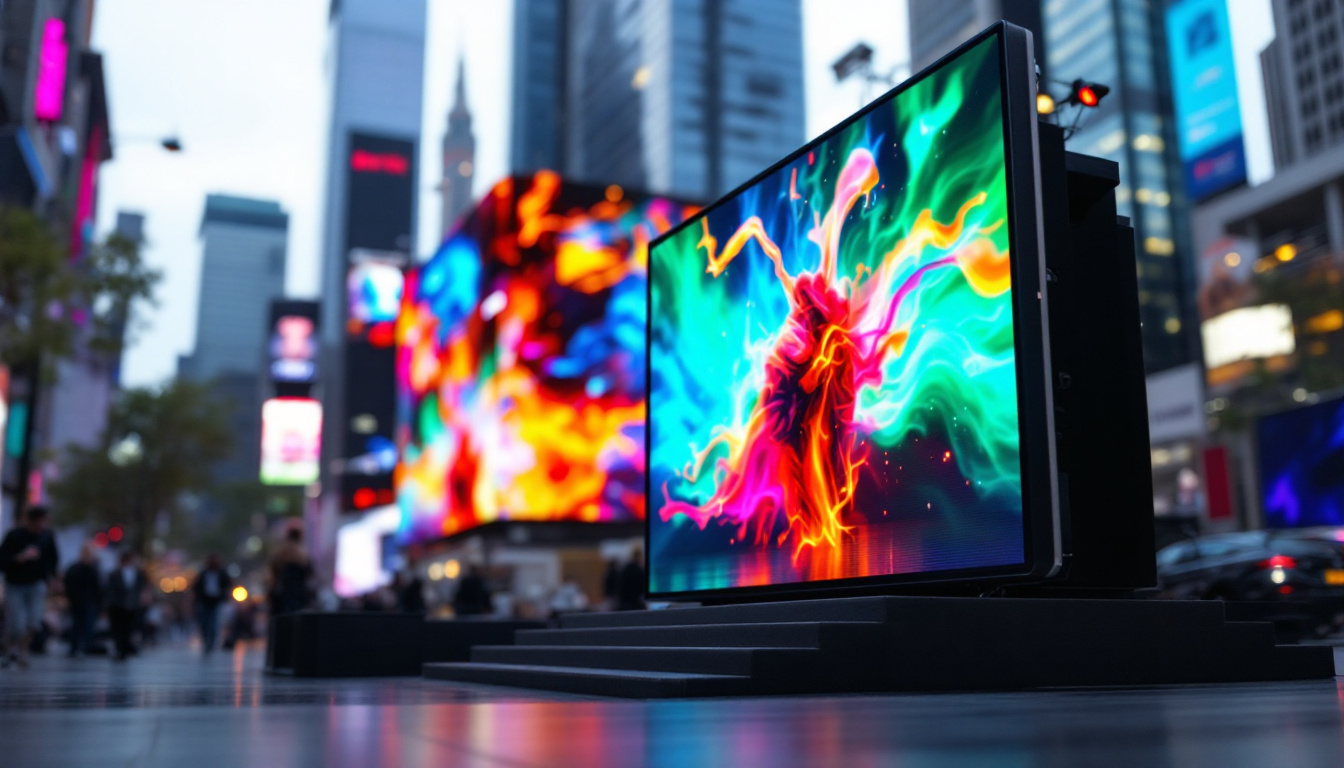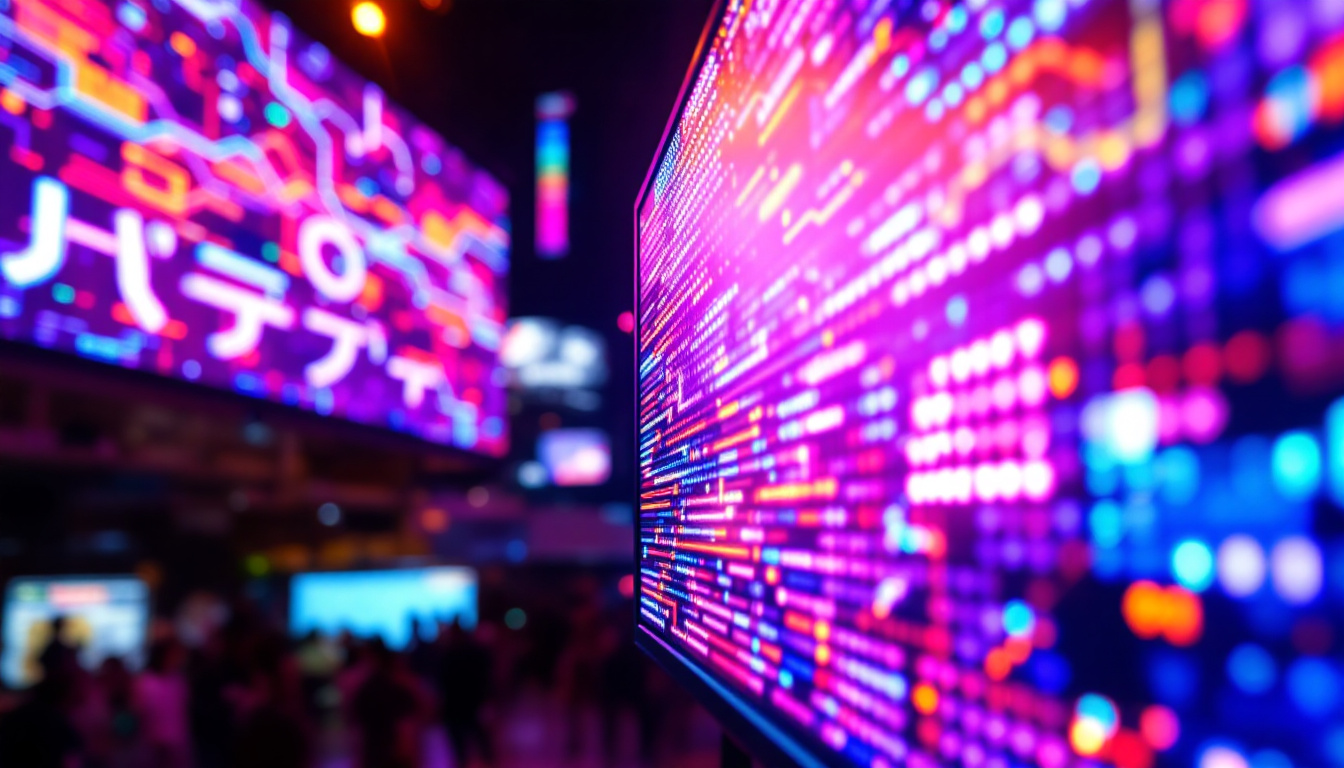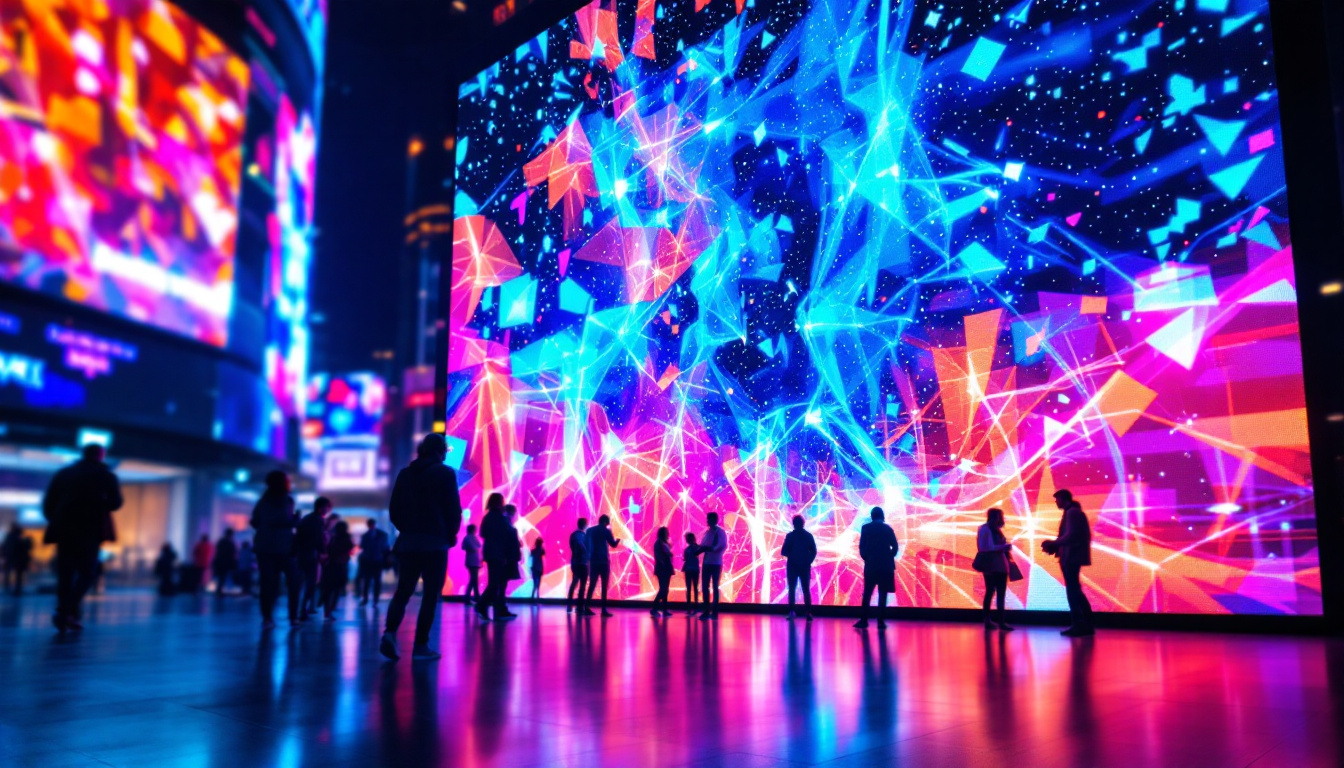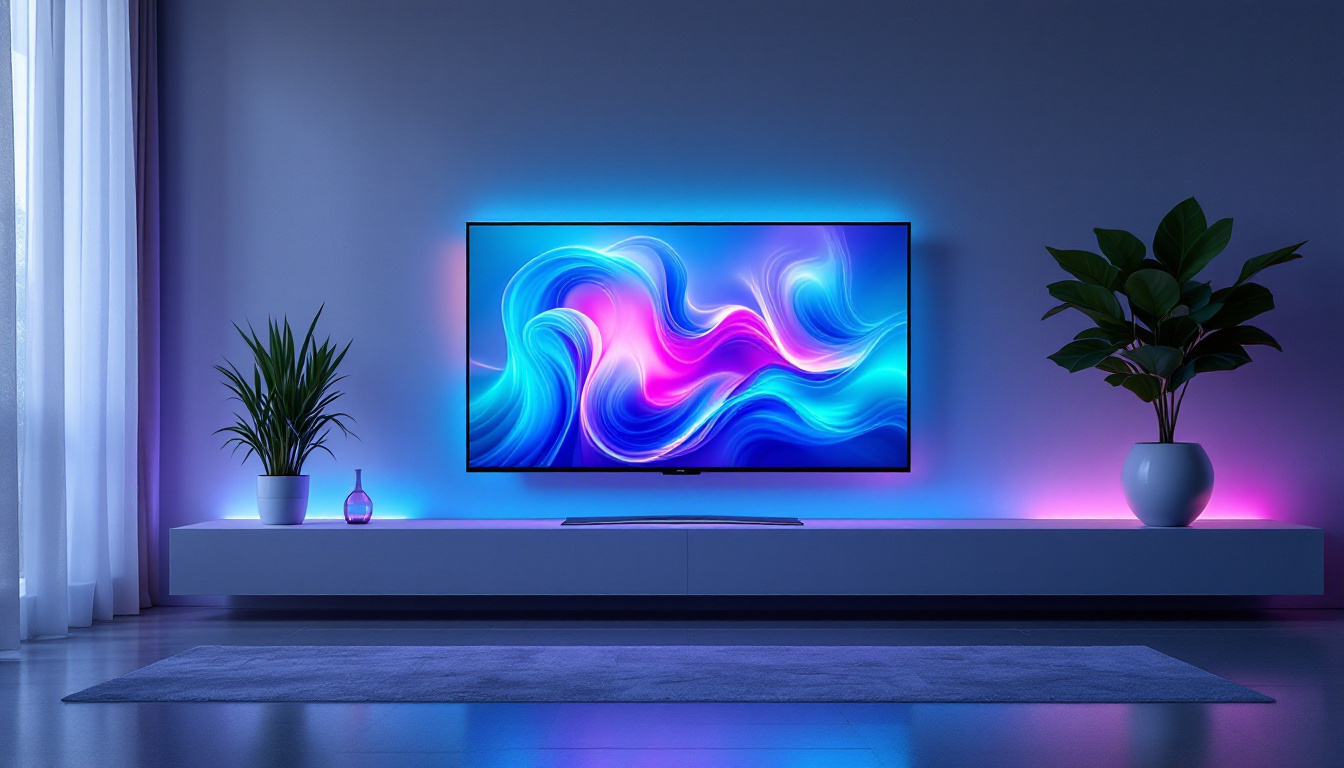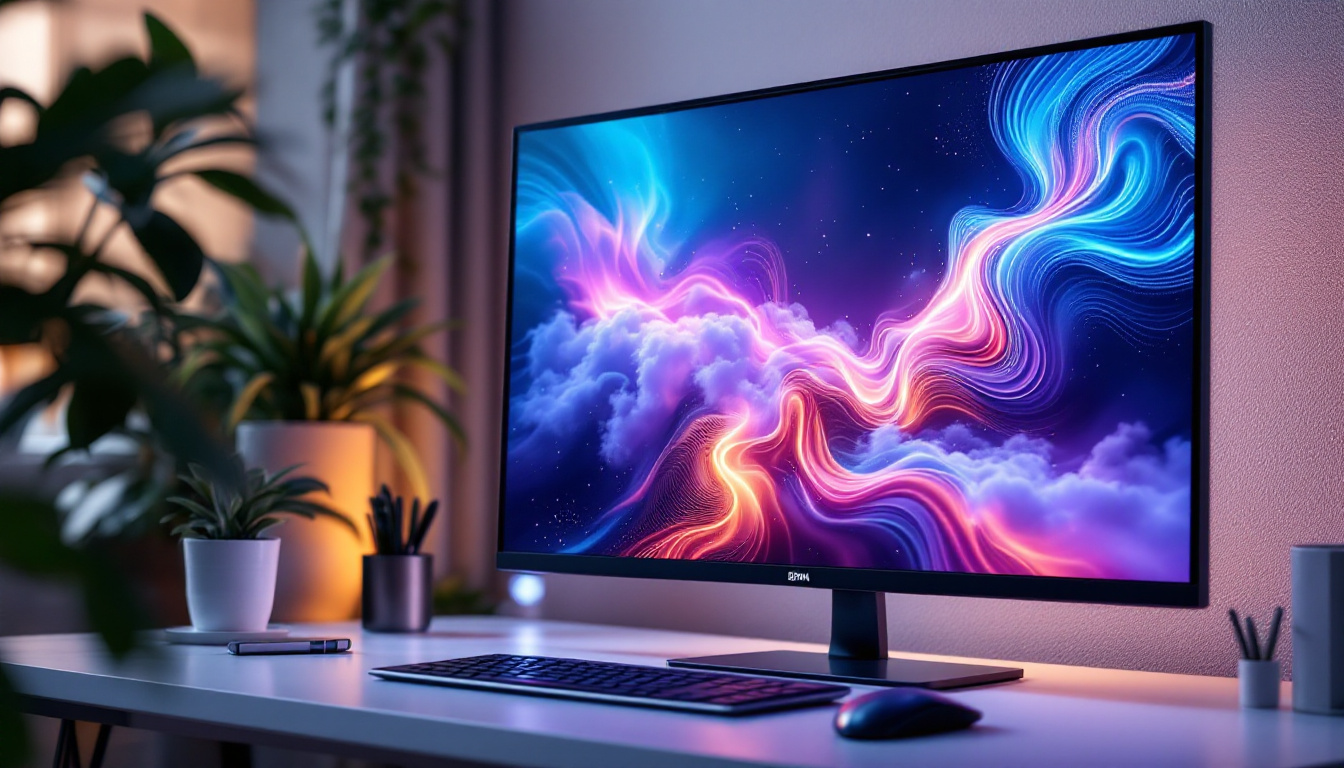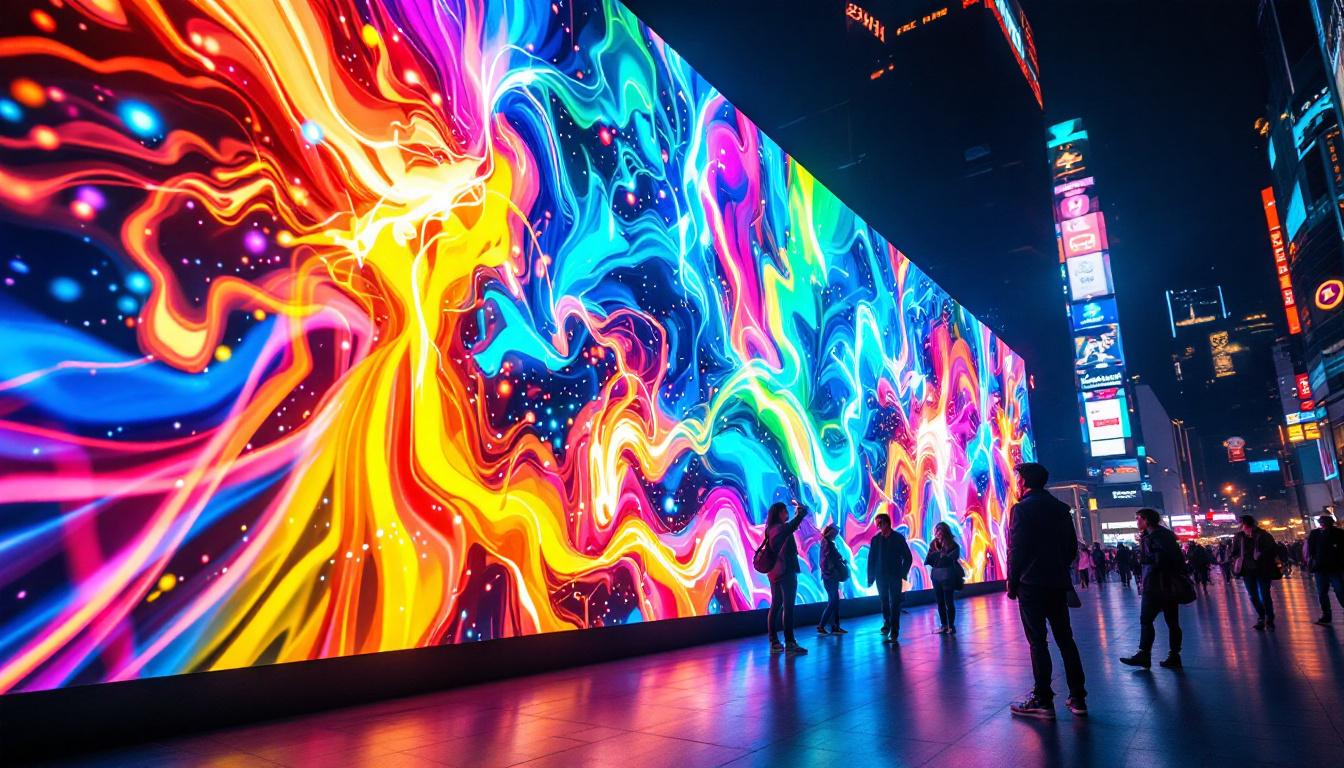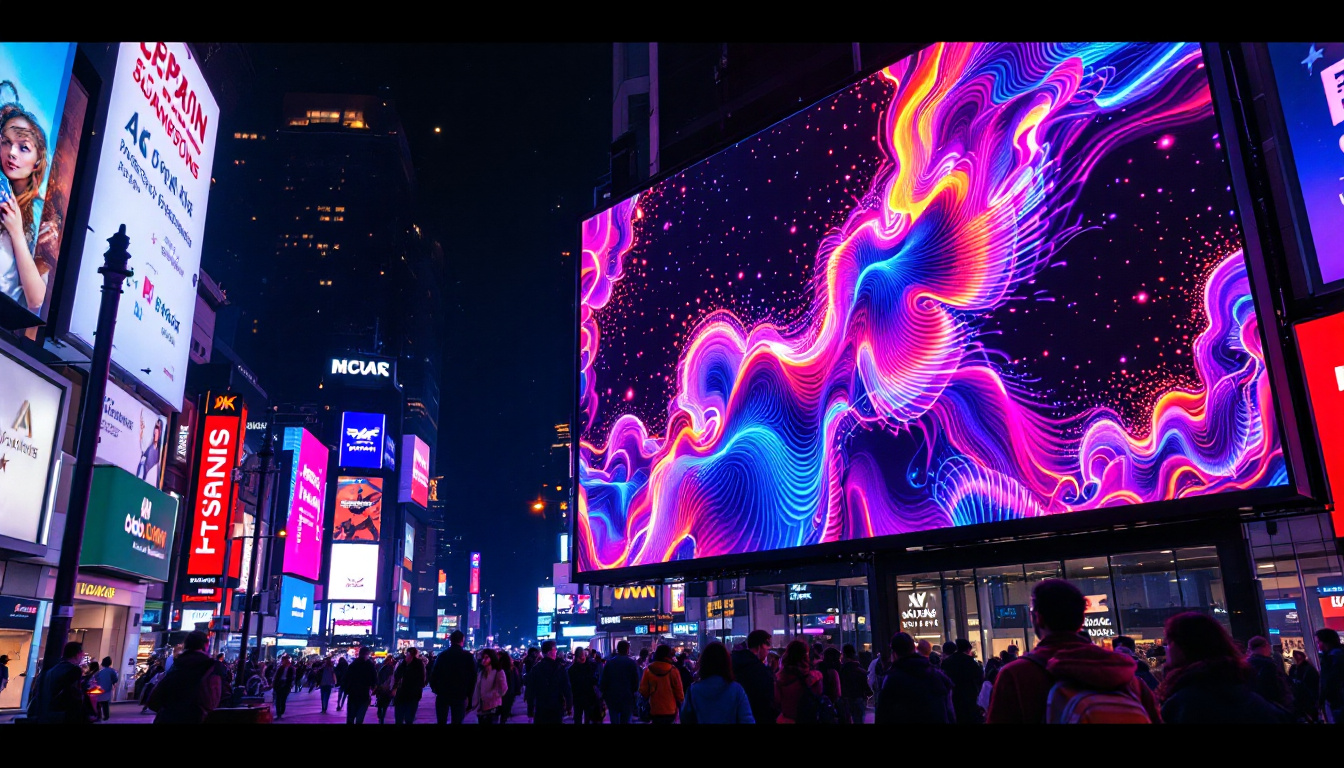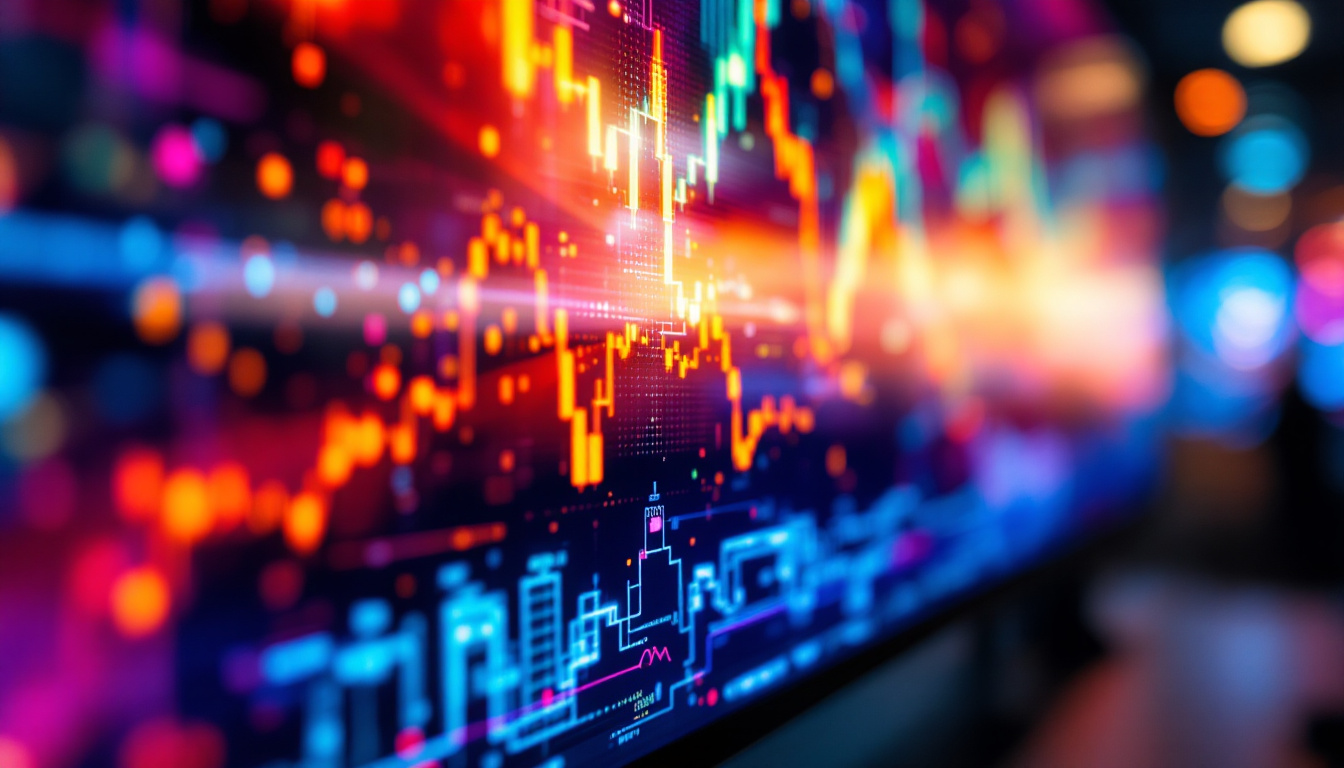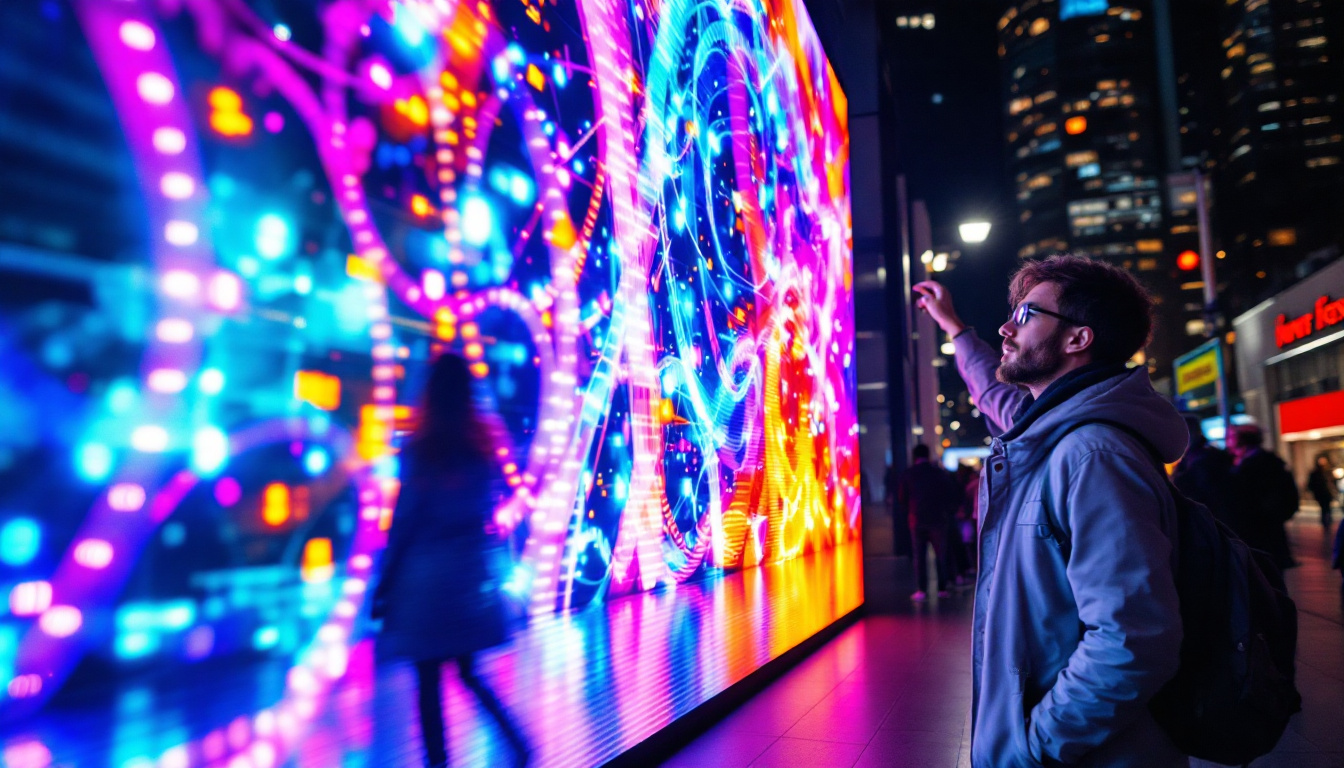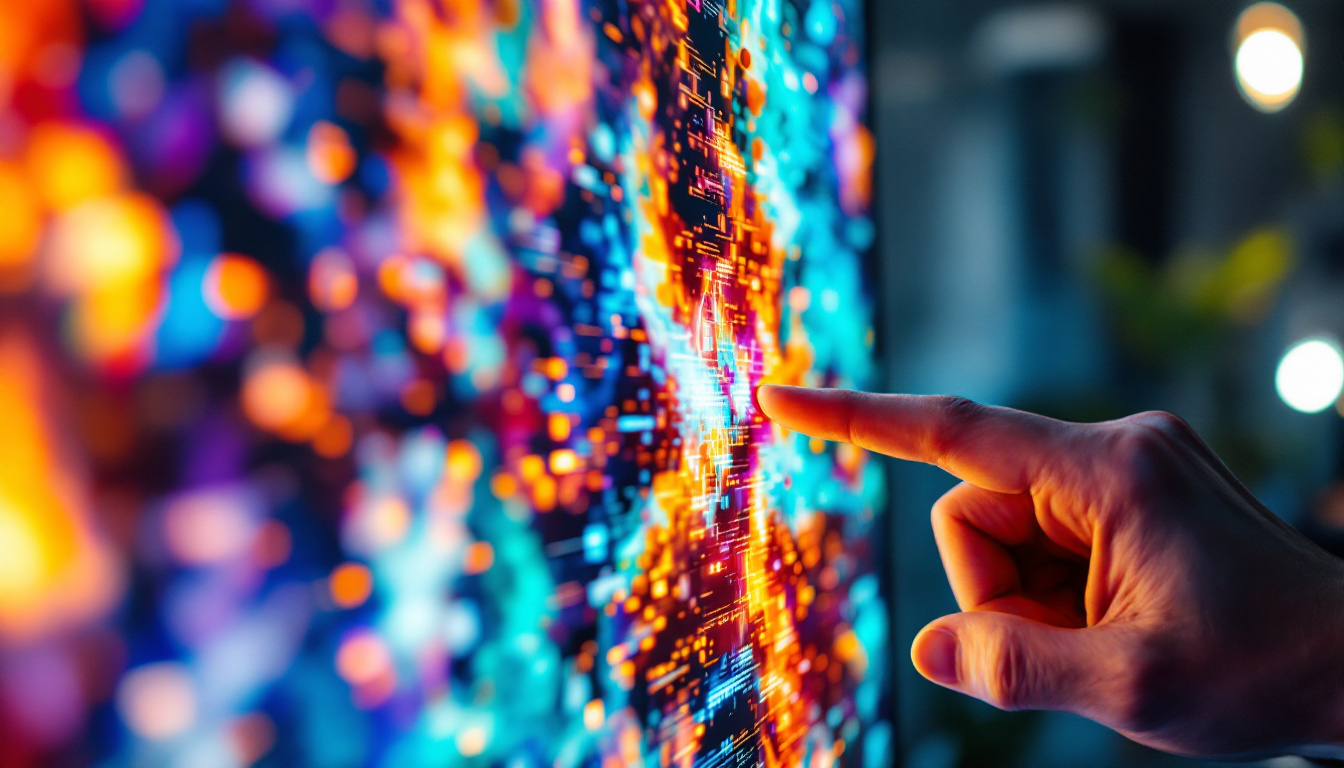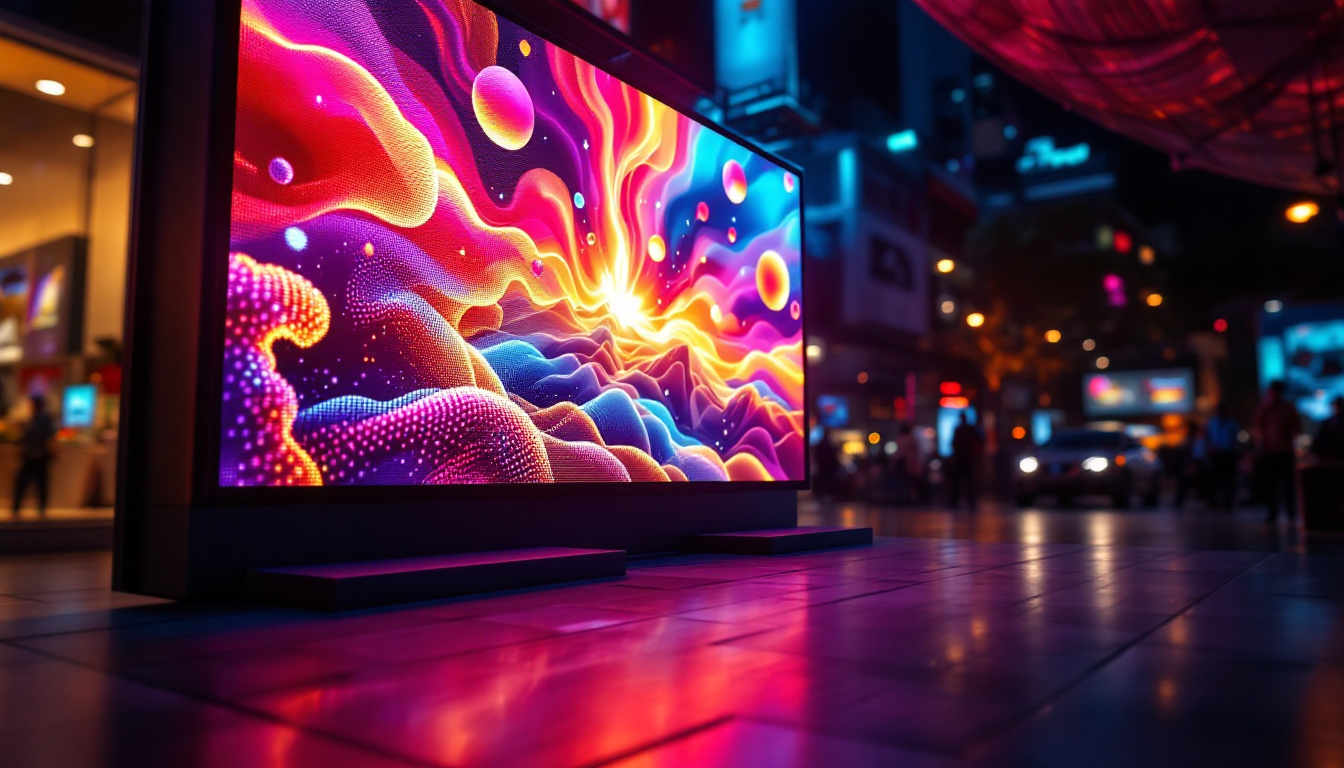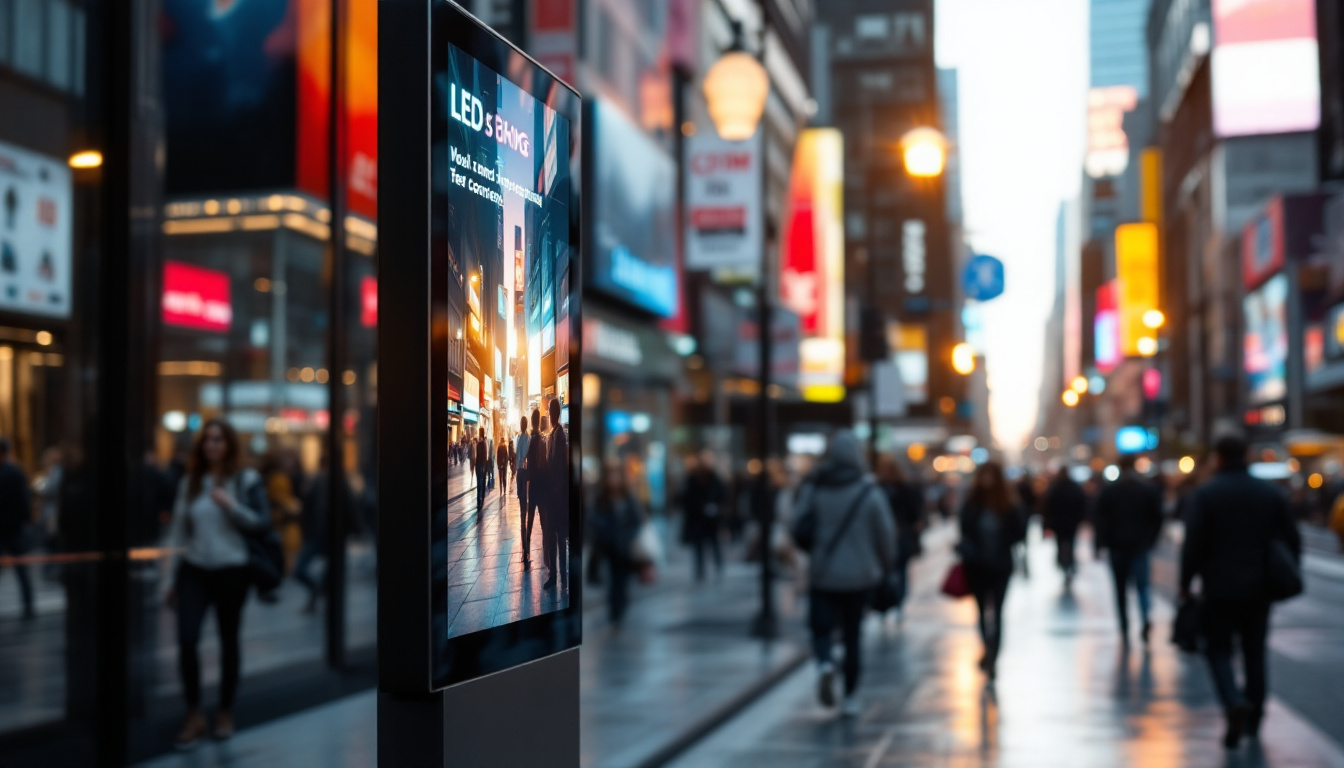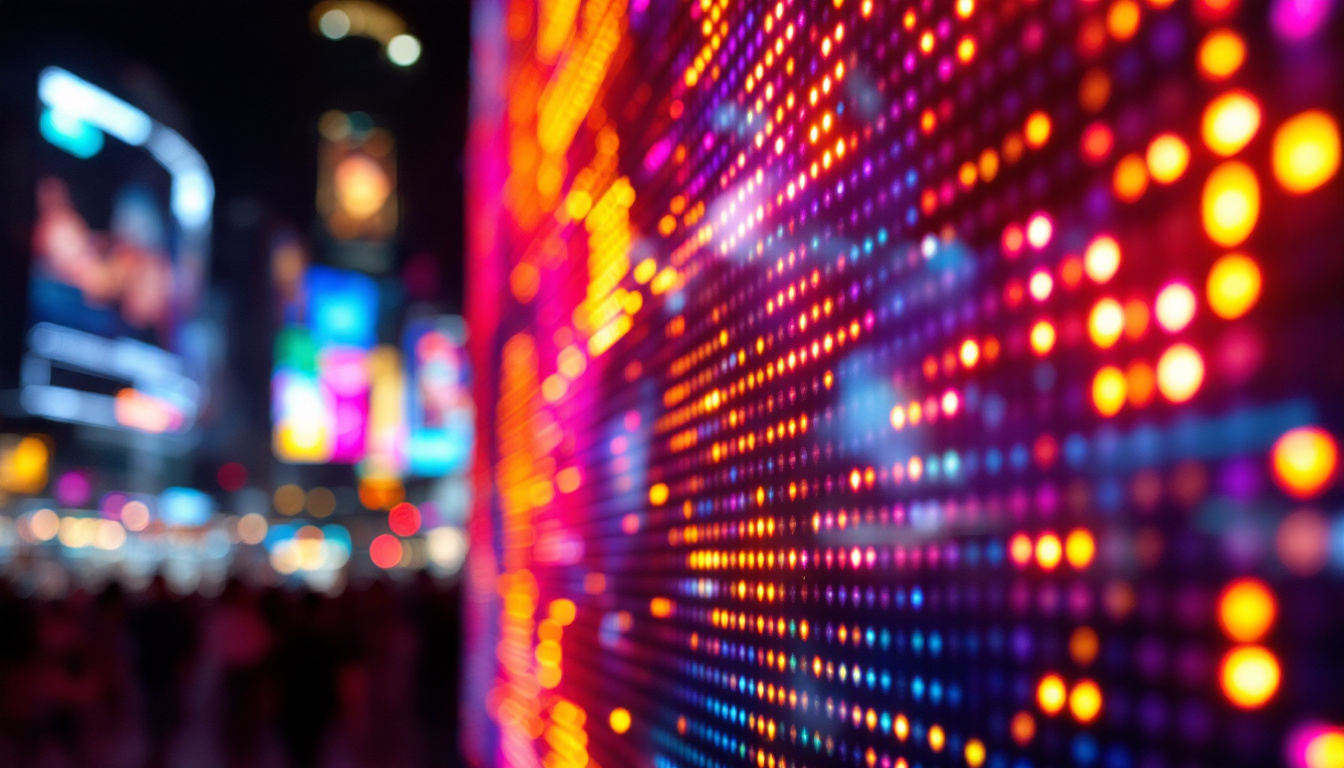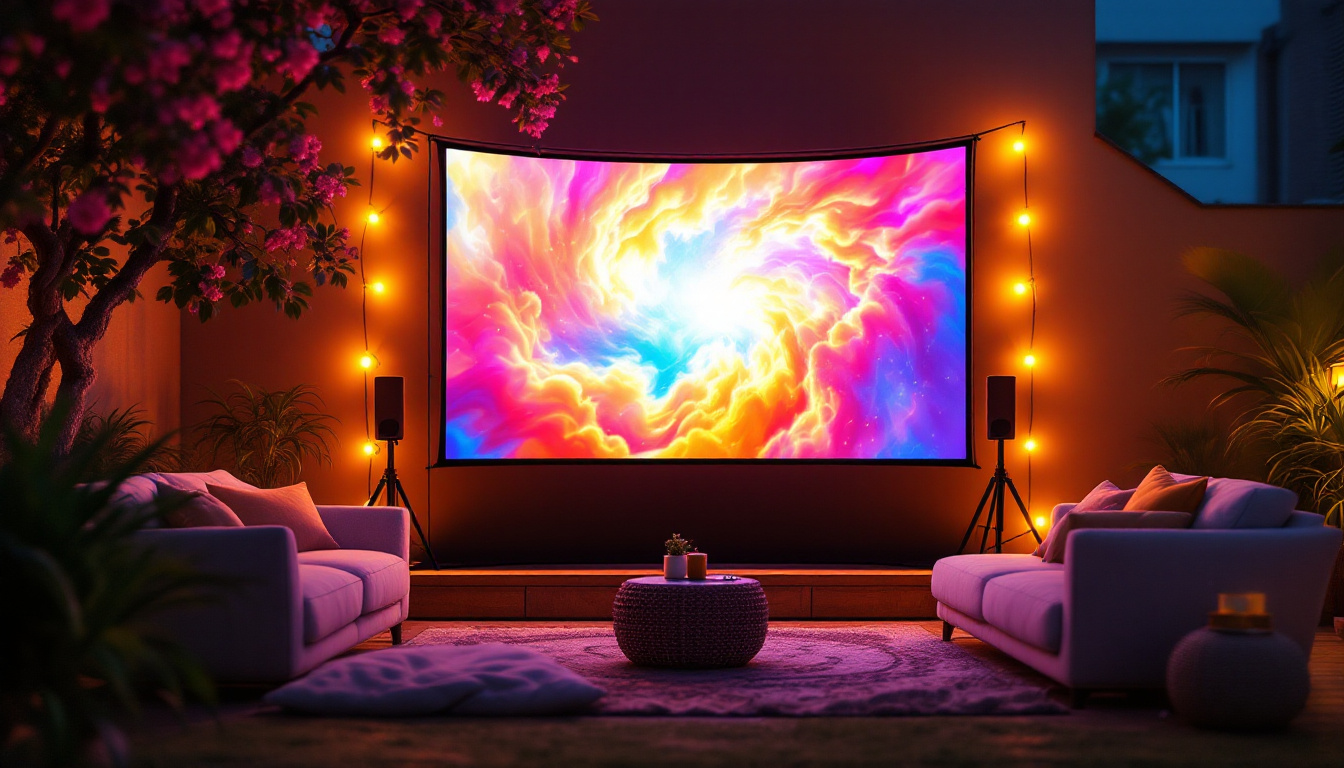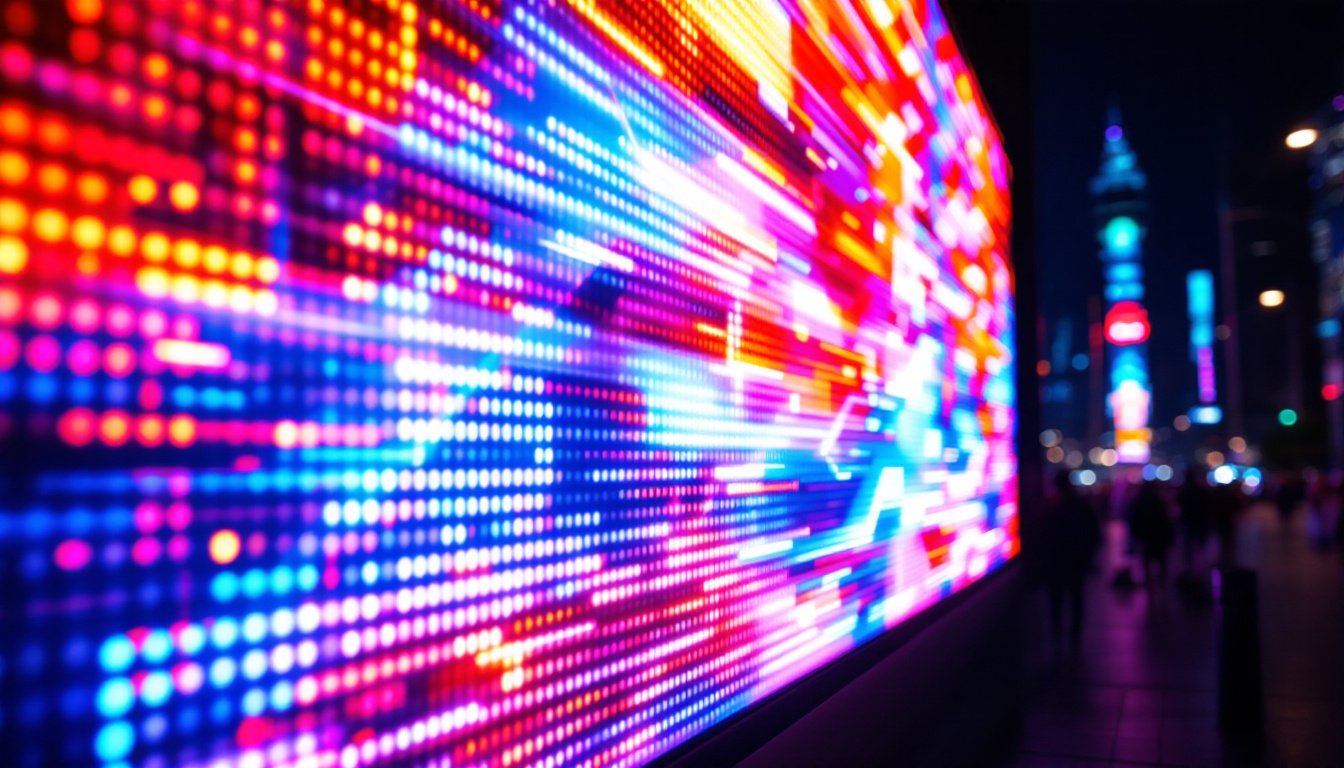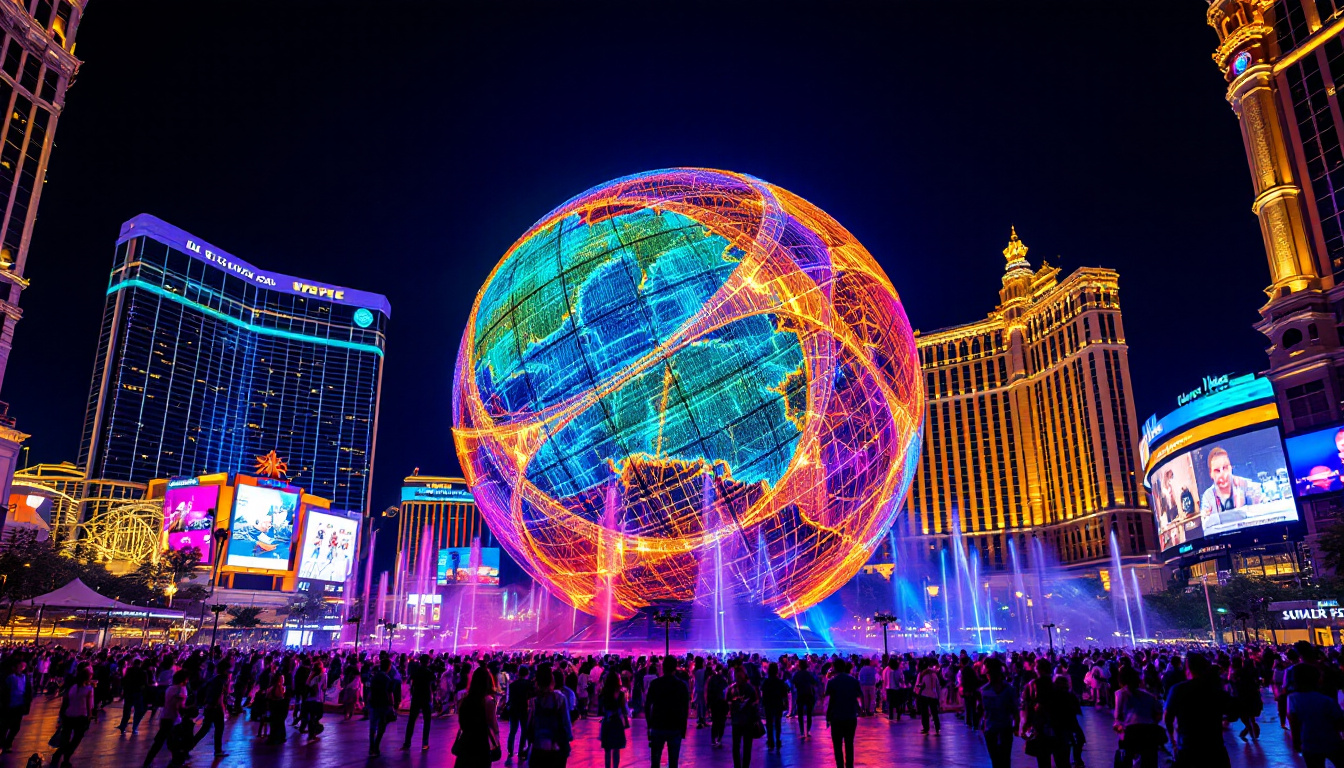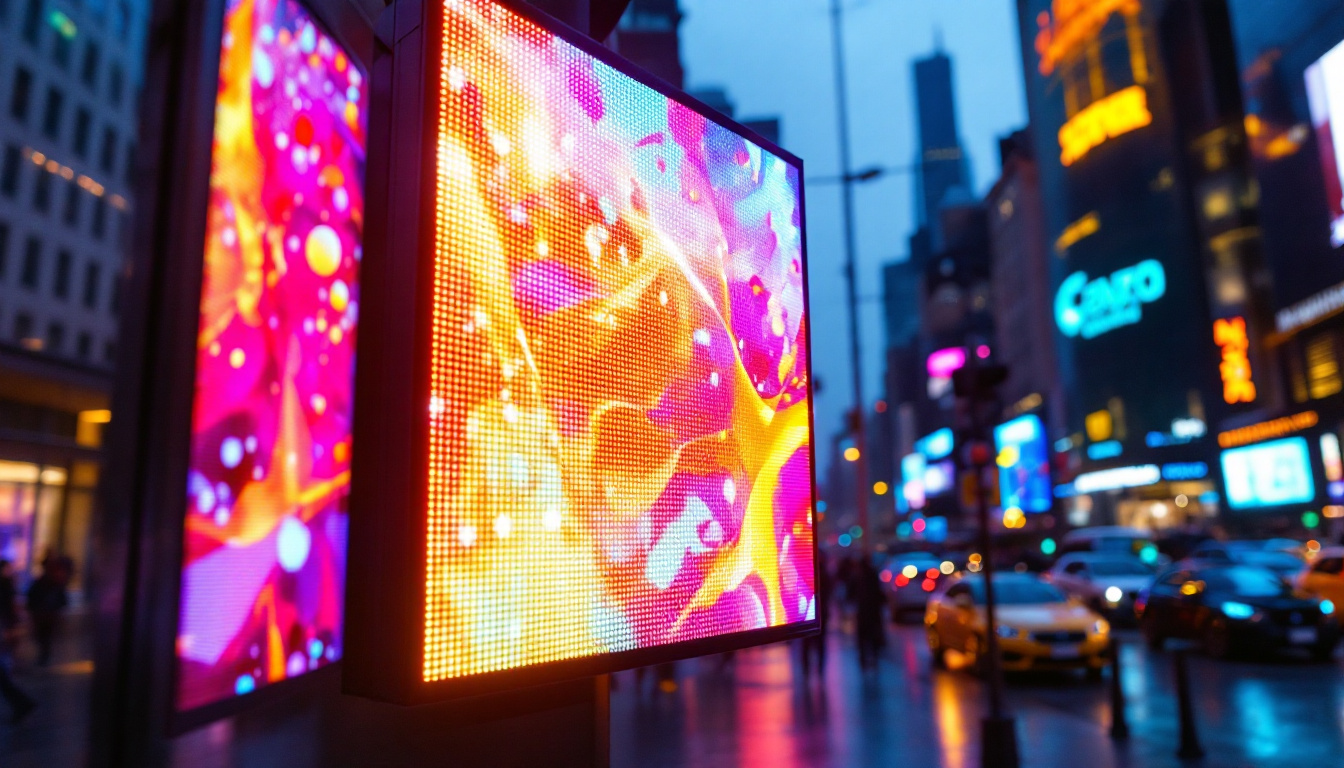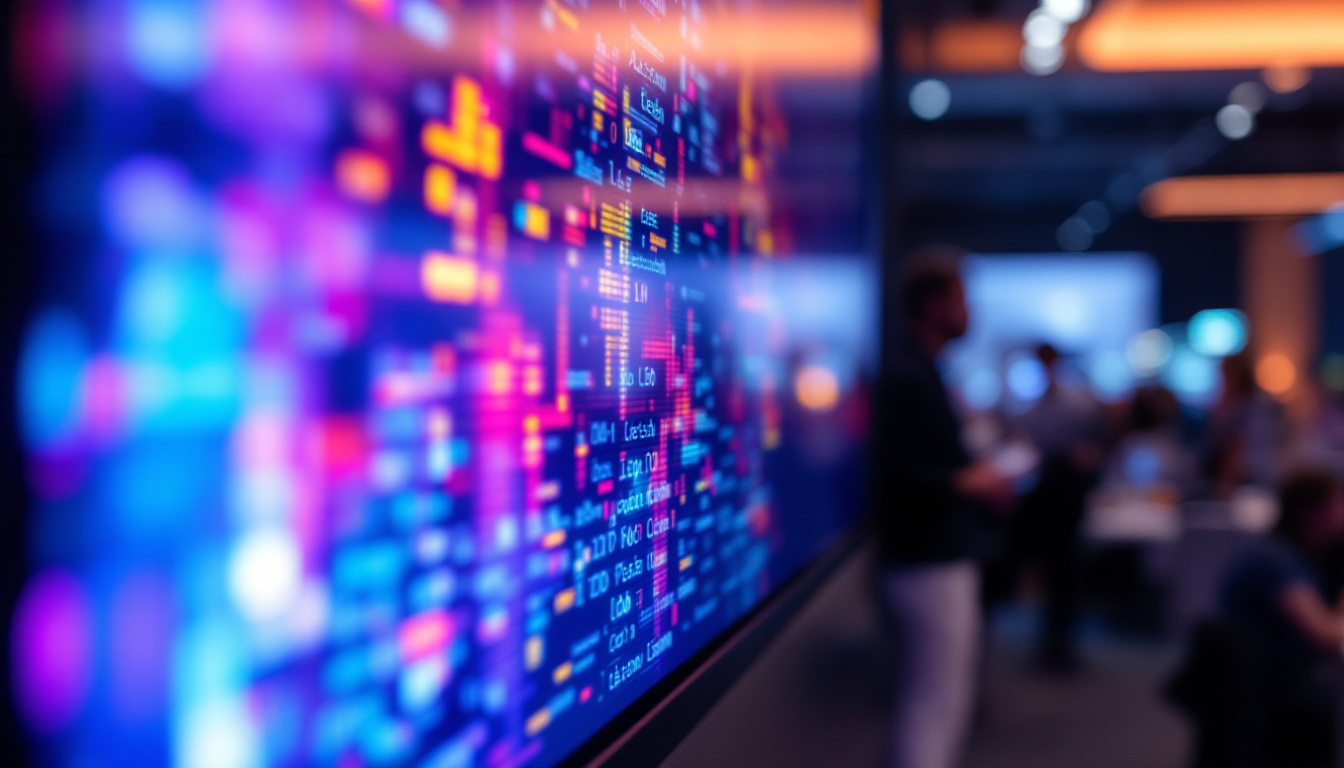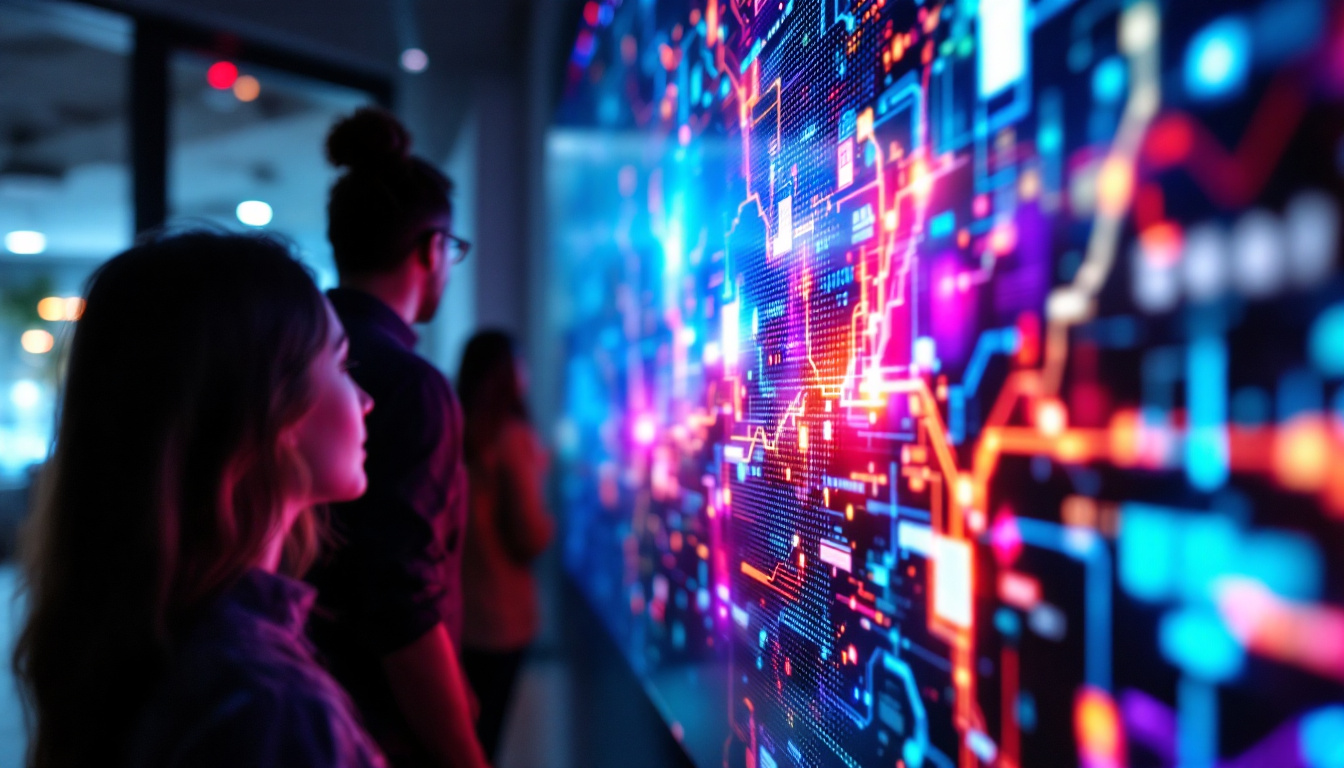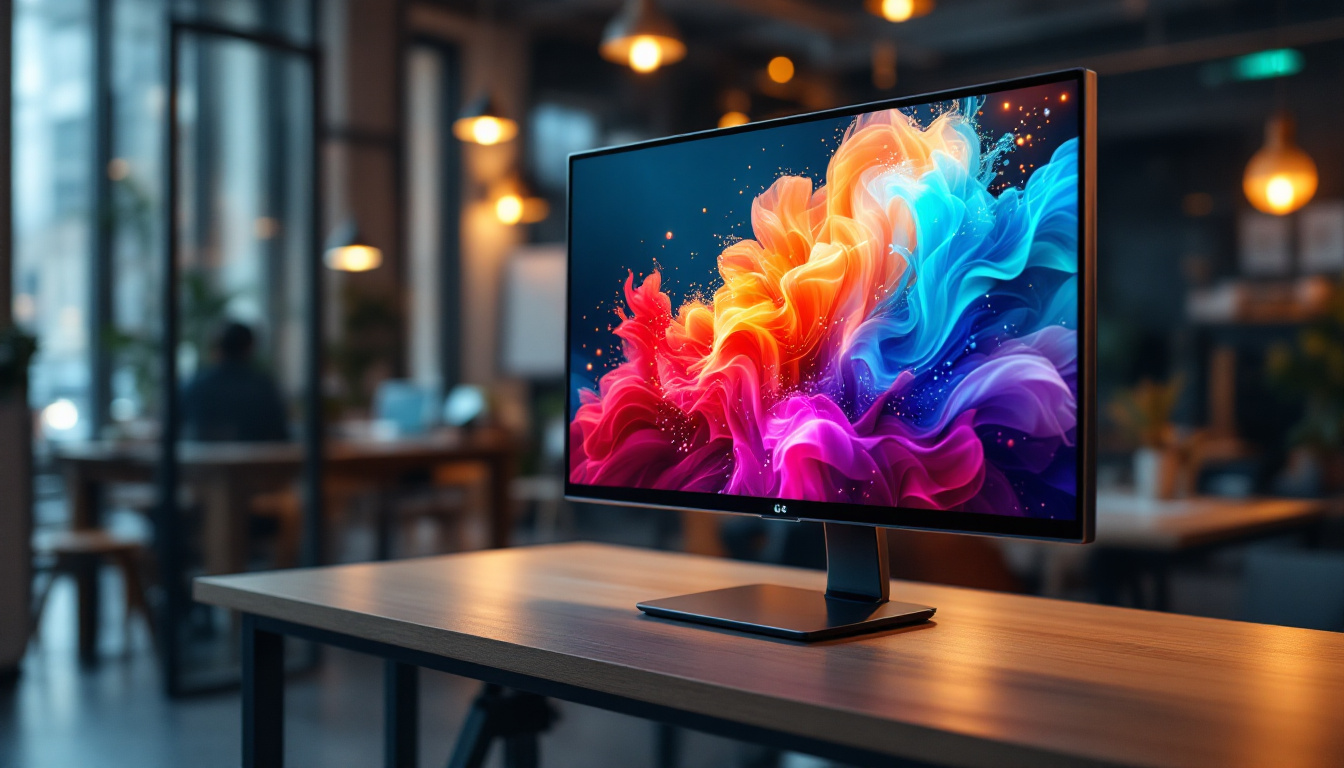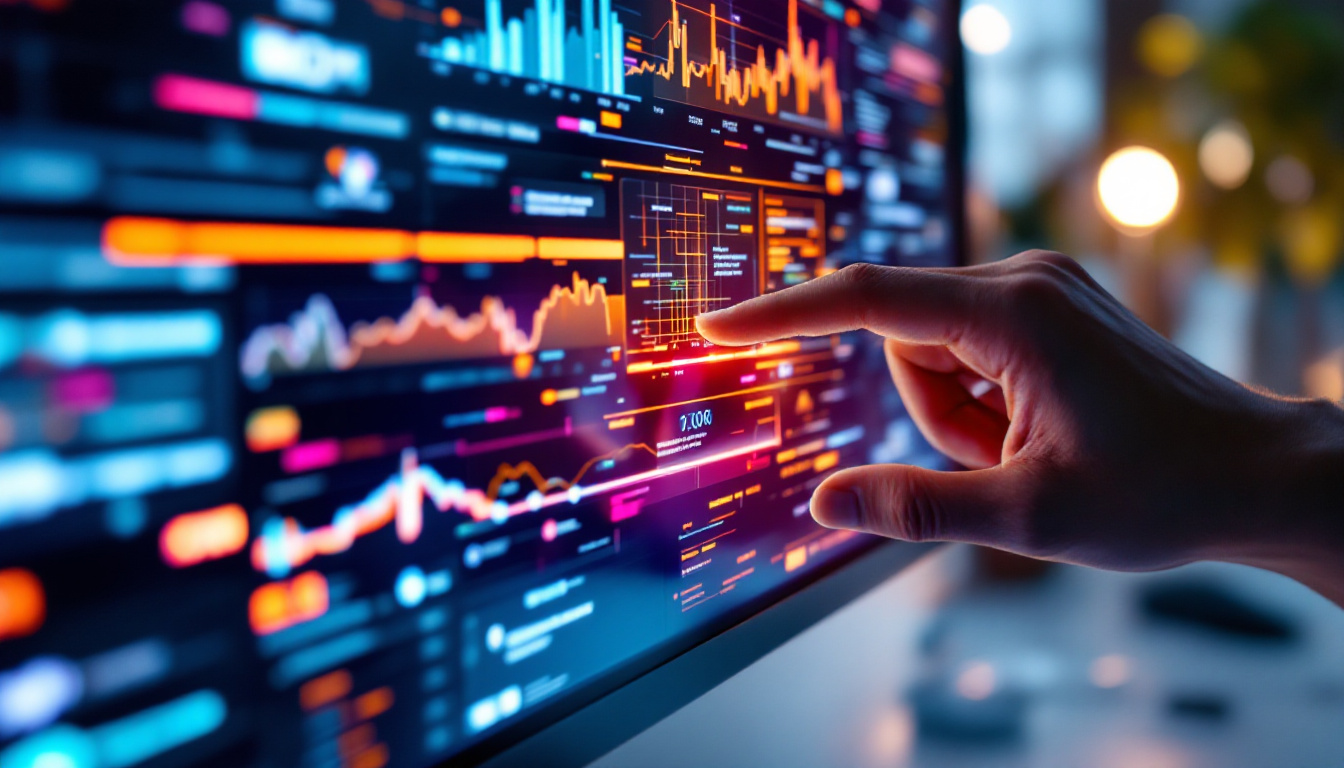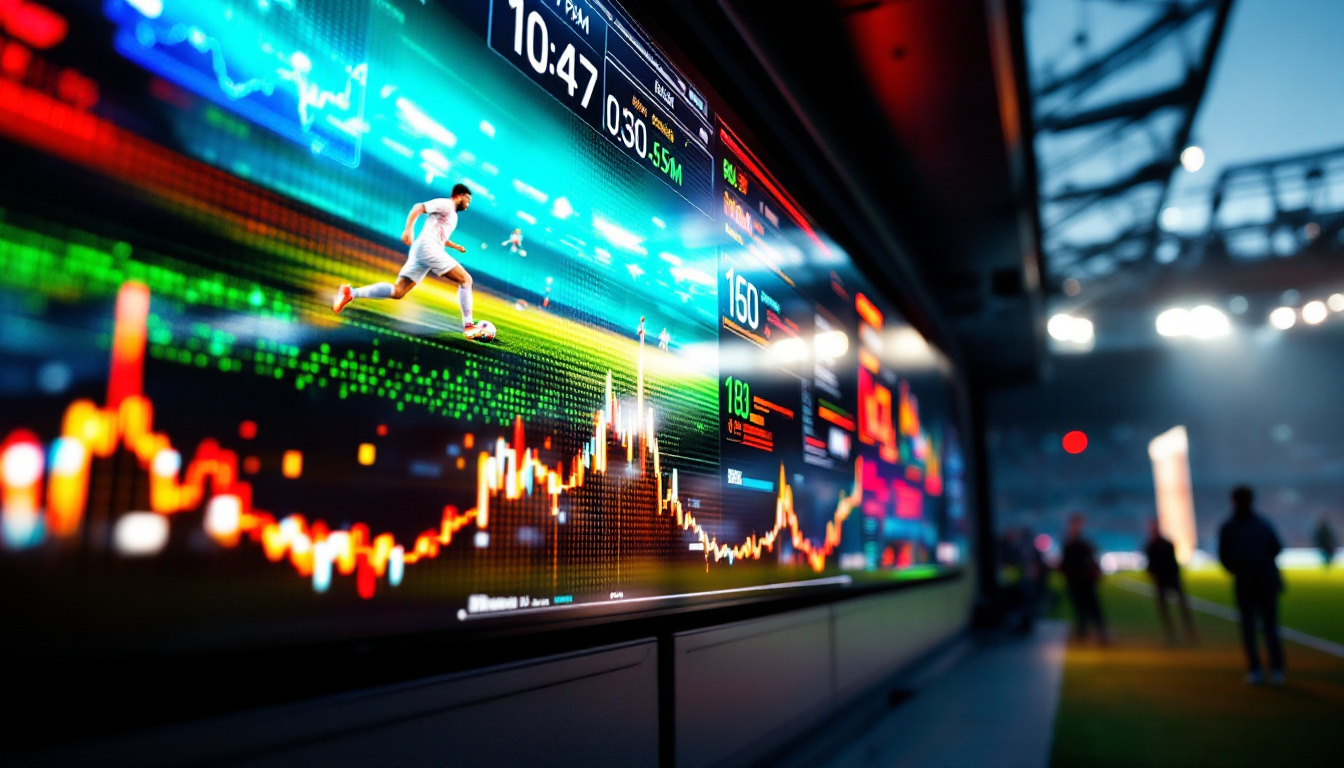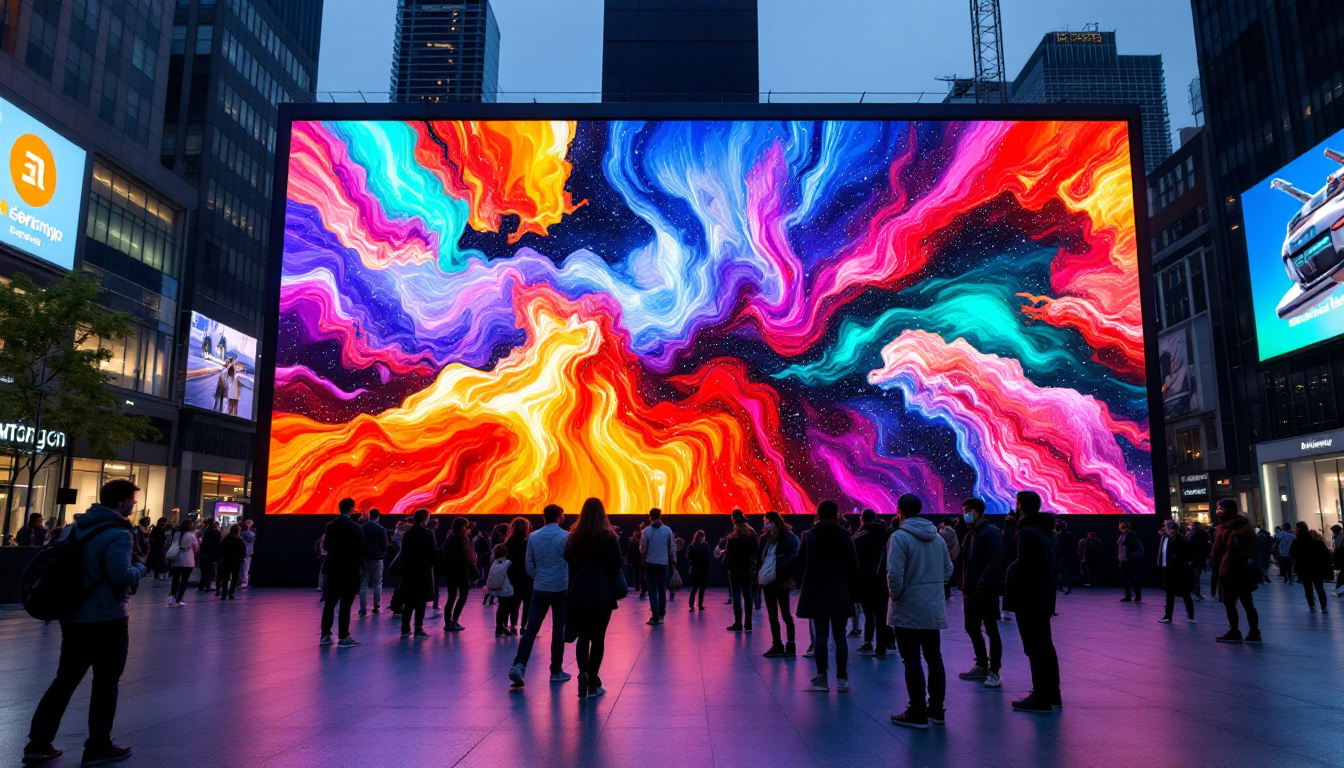In the ever-evolving world of technology, LED displays have emerged as a dominant force in visual communication. From advertising billboards to indoor screens in corporate environments, LED technology has transformed how information is conveyed. This article delves into the intricacies of LED displays, exploring their functionalities, advantages, and applications.
Understanding LED Technology
LED, or Light Emitting Diode, is a semiconductor device that emits light when an electric current passes through it. This technology has revolutionized the display industry, offering a range of benefits over traditional display methods. The fundamental principle behind LEDs is relatively simple, yet the implications of this technology are profound.
How LEDs Work
At the core of LED technology is the process of electroluminescence. When electricity flows through a semiconductor material, it excites the electrons, causing them to emit photons, or light particles. The color of the emitted light depends on the materials used in the semiconductor. By combining red, green, and blue LEDs, a full spectrum of colors can be produced, allowing for vibrant and dynamic displays.
LEDs are typically arranged in a grid format, creating a pixel matrix. Each pixel consists of individual red, green, and blue diodes, which can be adjusted in intensity to create various colors and images. This pixel-based approach is what allows LED displays to produce high-resolution images and videos, making them suitable for a wide range of applications. The efficiency of LEDs also contributes to their popularity; they consume significantly less power than traditional incandescent bulbs, leading to lower energy costs and a reduced carbon footprint.
Types of LED Displays
LED displays come in various types, each designed for specific uses and environments. The most common types include:
- Direct View LED: These displays consist of individual LED modules that are directly visible to the viewer. They are commonly used for outdoor advertising and large-scale installations.
- LED Video Walls: Composed of multiple LED panels, video walls can create a larger, seamless display. They are often used in control rooms, event venues, and retail spaces.
- OLED Displays: Organic LEDs are a type of LED technology that allows for thinner displays with better contrast ratios. They are commonly found in smartphones and high-end televisions.
In addition to these popular types, there are also specialized LED displays such as transparent LEDs, which allow for light to pass through while still displaying images, making them ideal for storefronts and exhibitions. Another innovation is the flexible LED display, which can bend and conform to various shapes, opening up new possibilities for creative installations in architecture and design. As technology continues to evolve, we can expect to see even more diverse applications of LED technology, enhancing everything from advertising to art installations.
Moreover, the integration of smart technology with LED displays has further expanded their capabilities. Many modern LED displays can now connect to the internet, allowing for real-time updates and dynamic content changes. This feature is particularly beneficial for businesses that need to convey timely information, such as news updates or promotional offers. The ability to control these displays remotely adds a layer of convenience and efficiency, making LED technology not only a visual marvel but also a powerful tool for communication in our increasingly digital world.
Advantages of LED Displays
LED displays offer numerous advantages that make them a preferred choice for many applications. Understanding these benefits can help businesses and organizations make informed decisions about their visual communication needs.
Energy Efficiency
One of the most significant advantages of LED displays is their energy efficiency. Compared to traditional lighting technologies, LEDs consume significantly less power, leading to lower energy costs. This is particularly beneficial for large installations, such as outdoor billboards, where energy consumption can be a major expense.
Additionally, LED displays have a longer lifespan than traditional displays, reducing the frequency of replacements and further contributing to cost savings. This longevity is a result of their solid-state construction, which is more durable and resistant to damage than older technologies.
Brightness and Visibility
LED displays are known for their exceptional brightness, making them suitable for both indoor and outdoor use. The ability to produce high levels of luminance ensures that content remains visible even in direct sunlight. This characteristic is crucial for outdoor advertising, where visibility can significantly impact effectiveness.
Moreover, the contrast ratio of LED displays is superior to many other display technologies. This means that colors appear more vibrant and images are clearer, enhancing the overall viewing experience. Whether in a dimly lit room or a brightly lit environment, LED displays maintain their visual integrity.
Applications of LED Displays
The versatility of LED displays allows them to be utilized in a myriad of applications across various industries. From entertainment to corporate environments, the potential uses are extensive.
Advertising and Marketing
One of the most prominent applications of LED displays is in advertising and marketing. digital billboards, often seen along highways and in urban areas, capture the attention of passersby with dynamic content. The ability to change advertisements in real-time allows businesses to target specific audiences and adapt to changing market conditions.
Furthermore, LED displays can be used in retail environments to enhance customer engagement. Interactive displays can showcase products, offer promotions, and create immersive shopping experiences that draw customers in and encourage purchases.
Entertainment and Events
In the entertainment industry, LED displays play a crucial role in concerts, festivals, and sporting events. Large video walls provide audiences with an enhanced viewing experience, ensuring that even those far from the stage can see performances clearly. The ability to display high-definition video and graphics allows for creative and captivating presentations that elevate the overall event atmosphere.
Additionally, LED technology is used in stage productions and theater, where dynamic lighting and visuals can enhance storytelling and create immersive environments for the audience.
Corporate and Educational Use
In corporate settings, LED displays are increasingly used for presentations, meetings, and training sessions. Their ability to display high-quality visuals makes them ideal for conveying complex information effectively. Interactive LED screens can facilitate collaboration and engagement among participants, enhancing the overall effectiveness of meetings.
Educational institutions also benefit from LED technology. Schools and universities use LED displays in classrooms and auditoriums to present educational content in an engaging manner. The versatility of these displays allows for a variety of teaching methods, catering to different learning styles.
Challenges and Considerations
While LED displays offer numerous advantages, there are also challenges and considerations that organizations must take into account when implementing this technology. Understanding these factors can help ensure successful integration and optimal performance.
Initial Costs
One of the primary challenges associated with LED displays is the initial investment required for installation. High-quality LED technology can be expensive, and organizations must weigh the upfront costs against the long-term benefits. However, it is essential to consider the potential savings in energy costs and maintenance over time, which can offset the initial expenditure.
Additionally, organizations should evaluate the specific needs of their applications to determine the appropriate type and size of the LED display. Investing in the right technology from the start can lead to better performance and satisfaction in the long run.
Maintenance and Upkeep
Although LED displays are generally low-maintenance, they still require regular upkeep to ensure optimal performance. Dust and debris can accumulate on the surface, affecting brightness and image quality. Routine cleaning and maintenance schedules should be established to keep displays in top condition.
Furthermore, organizations should be prepared for potential repairs, especially in outdoor environments where displays are exposed to the elements. Having a plan in place for maintenance and repairs can help minimize downtime and ensure that displays remain operational.
The Future of LED Displays
The future of LED displays looks promising, with ongoing advancements in technology and design. As industries continue to embrace digital transformation, the demand for high-quality visual communication will only increase.
Innovations in LED Technology
Recent innovations in LED technology have led to the development of even more efficient and versatile displays. For instance, microLED technology is gaining traction, offering improved resolution and color accuracy. This advancement allows for smaller and more compact displays without sacrificing quality.
Additionally, the integration of artificial intelligence and machine learning into display technology is paving the way for smarter and more adaptive displays. These innovations can enhance user experiences by providing personalized content and improving overall interactivity.
Sustainability Considerations
As environmental concerns continue to grow, the LED display industry is also focusing on sustainability. Manufacturers are exploring eco-friendly materials and production methods, aiming to reduce the carbon footprint associated with display manufacturing. Furthermore, the energy efficiency of LED technology contributes to sustainability efforts by lowering energy consumption.
Organizations looking to adopt LED displays can benefit from these sustainable practices, aligning their visual communication strategies with broader environmental goals.
Conclusion
LED displays have undeniably transformed the landscape of visual communication, offering unparalleled advantages in brightness, energy efficiency, and versatility. As technology continues to evolve, the applications and potential of LED displays will only expand, making them an essential tool for businesses and organizations across various sectors.
By understanding the intricacies of LED technology, its benefits, and potential challenges, organizations can make informed decisions that enhance their visual communication strategies. As the demand for dynamic and engaging content grows, embracing LED displays will be crucial in staying ahead in a competitive landscape.
Discover LumenMatrix LED Display Solutions
Ready to elevate your visual communication with cutting-edge LED display technology? LumenMatrix is at the forefront of innovation, offering a diverse range of LED display solutions tailored to your needs. From captivating Indoor and Outdoor LED Wall Displays to dynamic Vehicle and Sports LED Displays, our products are designed to enhance brand visibility and create unforgettable visual experiences. Embrace the future of digital signage with our All-in-One LED Displays, LED Transparent Displays, and more. Check out LumenMatrix LED Display Solutions today and transform the way you share your message with the world.

